Welcome to the winter American Astronomical Society (AAS) meeting in Honolulu, Hawai’i! Astrobites is attending the conference as usual, and we will report highlights from each day here. If you’d like to see more timely updates during the day, we encourage you to search the #aas235 hashtag on twitter. We’ll be posting once a day during the meeting, so be sure to visit the site often to catch all the news!
Editor’s Note: This week we’re at the 235th AAS Meeting in Honolulu, HI. Along with a team of authors from Astrobites, we will be writing updates on selected events at the meeting and posting each day. Follow along here or at astrobites.com. The usual posting schedule for AAS Nova will resume next week.

The Swan Nebula in high-resolution images from SOFIA (click for the full view). [NASA/SOFIA/Lim, De Buizer, & Radomski et al.; ESA/Herschel; NASA/JPL-Caltech]
Dannie Heineman Prize: Making a Habitable Planet (by Ellis Avallone)

Prof. Ted Bergin from the University of Michigan discusses the required ingredients for a habitable world.
This morning started off with Edwin (Ted) Bergin (University of Michigan), the winner of this year’s Dannie Heineman Prize, discussing the formation of habitable worlds. He began by thanking all of his collaborators, placing special emphasis on the students who had “taught [him] so much” and the band Rush that “helped [him] survive grad school.” Bergin began his talk by highlighting some of the diversity work he’s been involved in, a notable venture being a workshop at the University of Michigan to discuss the effects of unconscious bias in the faculty hiring process and how to work against these biases.
Bergin then moved on to the main focus of the talk, carbon — specifically its journey from the molecular cloud the Sun was born in to present day Earth. He then introduced the required ingredients for a habitable world like Earth:
- The planet must be rocky.
- The planet must be the correct distance from its host star for liquid water to exist.
- The elements that are essential for life must exist on that planet (e.g. carbon, oxygen, water, and nitrogen).
Although these ingredients exist on Earth, there are a few things that should be emphasized. To start, water makes up only 0.05% of the total mass of Earth. Next, Earth is a carbon-poor planet, even though carbon is an essential ingredient for life. The inner solar system is also carbon-depleted, while comets from the outer solar system contain excesses of carbon. Even with these deficiencies, life still exists! Astronomers would like to know whether this is a common outcome for other worlds.
To answer this, Bergin looks to the formation of our solar system, tracing the evolution of carbon from the early Sun to where we are now. All stars are born in molecular clouds, large clouds of gas that, when disturbed, can condense to form stars. These molecular clouds contain many simple molecules and hydrocarbons, which are the primary carriers of carbon in molecular clouds. As a stellar core forms, an ice mantle builds up. This mantle provides ices to the star’s protoplanetary disk, which forms after stellar winds remove much of the gas that encloses the star.
Bergin then transitions to discussing what happens to carbon at various distances from the star. Comets, for example, can only carry carbon to the inner solar system if they form outside the snowline, the region in the solar system where ices can form. Carbon-containing rocks, however, can form within 1 AU of the Sun. “I’ve just proved to you that Earth is made of rocks,” Bergin explains.
Why does this seemingly trivial concept matter? It’s important to understand how Earth got its specific carbon abundance when it formed. As mentioned previously, the inner solar system is depleted of carbon while the outer solar system contains excess carbon. As Jupiter’s core formed, it created a gap in the planet-forming disk that disconnected the inner solar system from the outer solar system. Earth’s carbon content requires that this gap formed within the first million years of the solar system. However, within this strict requirement for Earth’s carbon, it remains unclear how often this happens for other planetary systems. Future missions like the Origins Space Telescope may help solve the mystery of how our habitable world came to be.
Press Conference: The Milky Way Inside & Out (by Kate Storey-Fisher)
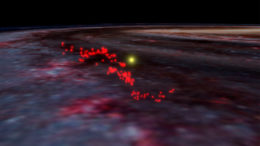
The Radcliffe Wave, a newly detected sinusoidal feature in our local galactic neighborhood. [Alyssa Goodman/Harvard University]
This press conference brought us insights from our home neighborhood in the Milky Way. Alyssa Goodman (Center for Astrophysics | Harvard & Smithsonian) started us off with the discovery of the Radcliffe Wave, a previously undetected sinusoidal structure of star-forming gas not far from our solar system. The wave was found thanks to new precisely measured distance data, calculated using proper motion observations of masers and a 3D dust map of the galaxy. These revealed a feature 9,000 light-years long and 400 light-years wide, which has a damped sine-wave shape unlike anything we’ve seen. Dubbed the Radcliffe Wave, after the Radcliffe Institute at Harvard where the discovery was made and to honor the early women astronomers who worked there, the feature could indicate a collision in our galactic neighborhood or even hint at the influence of dark matter. Press release
Next, James De Buizer and Wanggi Lim (Stratospheric Observatory for Infrared Astronomy [SOFIA] / Universities Space Research Association) announced a newly uncovered population of stars in the Swan Nebula (see cover image). Using the SOFIA telescope on board a Boeing 747, the team obtained the highest resolution infrared image ever taken of the nebula, which is in the Sagittarius constellation 5,000 lightyears away. This revealed a population of young and very massive stars, which are rare but crucial to the story of galaxy evolution. The new observations also show that the nebula has undergone multiple eras of star formation, with regions of older stars as well as younger stars, giving us a detailed understanding of how the Swan Nebula hatched over its lifetime. Press release
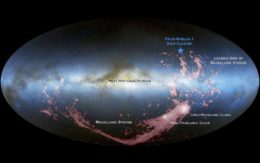
A young star cluster, Price-Whelan 1, is the first to be discovered in the Magellanic Stream. [D. Nidever; NASA]
Adrian Price-Whelan (Flatiron Institute) continued the theme of new star populations with the discovery of a young cluster on the outskirts of the Milky Way halo. By mining the 1.7 billion precise distances and proper motions in the Gaia DR2 catalog, Price-Whelan found a cluster of stars with correlated distances and motions indicating a bound system. The cluster is a young 116 million years old and is small at 1,200 solar masses — typical parameters for star clusters in the Milky Way disk. However, the data showed that it is a whopping 94,000 lightyears away, and it’s far from the midplane of the disk. Because of the cluster’s young age, it wouldn’t have had time to migrate there from elsewhere, and the only potential star-forming regions out there are the gas stream between the Large and Small Magellanic clouds. This means that Price-Whelan 1, as the cluster is called, is the first detected star cluster in the Magellanic Stream. Press release
A cluster this exciting deserves more data. David Nidever (Montana State University) discussed the spectroscopic follow-up he performed on the Price-Whelan 1 star cluster. He found an age consistent with that reported by Price-Whelan, and a heavy element content 6% that of the Sun’s, which is consistent with the known content in the leading arm of the Magellanic Stream. Furthermore, the mean radial velocity of the stars clocks in at a speedy 277 km/s, also matching the velocity of the leading arm. These results give high confidence that the cluster was born in the Magellanic Stream — and this in turn tells us the distance to the stream’s leading arm, which must be twice as close as previously thought. This suggests that the Magellanic Stream will merge with the Milky Way sooner than expected, replenishing our gas reservoir.
Plenary Lecture: Fast Radio Bursts (by Aaron Tohuvavohu)
In this explosive plenary, Dr. Jason Hessels (ASTRON & University of Amsterdam) began by telling the story of fast radio bursts (FRBs) in parallel with the narrative of discovery surrounding gamma-ray bursts (GRBs); phenomenologically somewhat similar events, discovered 40 years earlier, and on the opposite side of the electromagnetic spectrum.
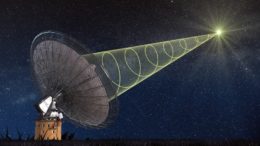
Artist’s impression of a fast radio burst observed by the Parkes Radio Telescope. [Swinburne Astronomy Productions]
Hessels continued the scientific discovery narrative in parallel with the history of GRBs. The localization of GRBs to their respective host galaxies, and the characterization of those hosts, was critical in determining the progenitors of GRBs and their diversity. Similarly, the discovery of repeating FRBs, which can be localized sufficiently for host-galaxy identification, was a dramatic transformation for the field. This simultaneously ruled out so-called ‘cataclysmic progenitors’ for those repeaters, but it also opened up the avenue for localizations — which rapidly followed with interferometric instruments. Hessels argued that localizations are useful not only for understanding what the progenitors of FRBs are, but also for using FRBs as efficient probes, even if we are ignorant as to the actual physical emission mechanisms.
Hessels concluded by reminding the audience that FRBs are good for (at least) three things: as probes of extreme environments, as a possible new type of astrophysical object, and as probes of the intervening material. The future is (radio) bright for the field of FRBs, with large-field-of-view survey instruments (such as CHIME) now online and more instruments planned in the near future. This author hopes that FRBs break from the GRB narrative in the duration between discovery and identification of the progenitors (30–40 years for GRBs!), but regardless: a very exciting decade of fast radio bursts lies ahead.
RAS Gold Medal Lecture: Star Formation and Galaxy Evolution Through the Lens of a Scaling Law (by Ellis Avallone)
The next talk of the day was by the winner of the RAS Gold Medal, one of the highest awards in astronomy, Rob Kennicutt (University of Arizona). Rob is an expert in star formation, and has had a long career in understanding various facets of this process. The talk began with a tribute to the late Dr. Paul Hodge, Kennicutt’s thesis advisor and a giant in astronomy.
Kennicutt then moved into discussing his career focus: star formation in galaxies. This field falls at the intersection of the disciplines of star formation and galactic evolution, exploring the ways in which these processes are intertwined. As if this weren’t already complicated enough, understanding star formation in galaxies is made even more difficult by the diversity of phenomena that occur in galaxies and the complex physics underlying these various processes.
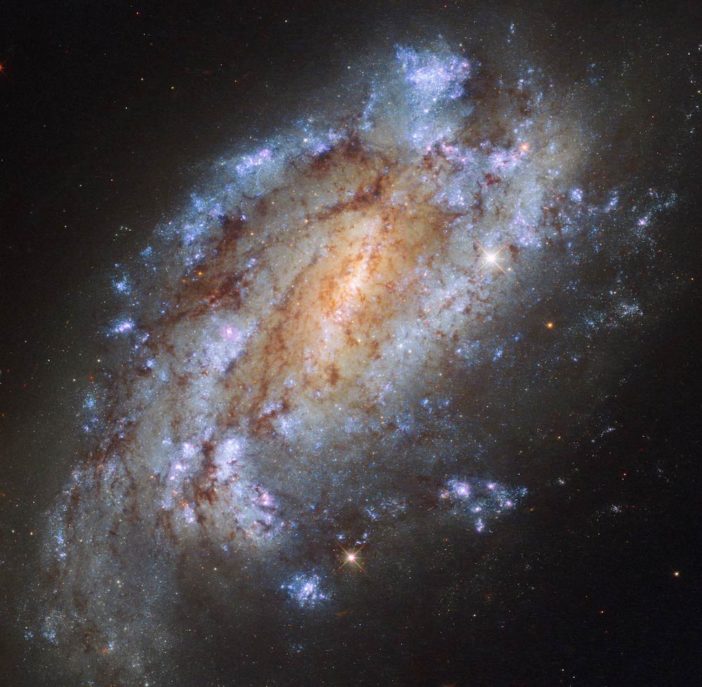
The spiral galaxy NGC 1559, pictured in this Hubble image, provides an excellent example of star formation in a nearby galaxy. [NASA/ESA/Hubble]
Kennicutt concluded his talk by discussing some future goals in the study of star formation in galaxies. If the goal is to create recipes for star formation models, the various dependencies of star formation on other factors are extremely powerful. However, if the goal is to understand the underlying physics of star formation, then we have to find a few more pieces of the puzzle to fully grasp what’s going on. Kennicutt ended with a quote from his colleague Dr. Martin Rees, who said “star formation is a bit like the weather,” in that it is a highly complex interconnected system. It’ll be interesting to see what advancements this field makes in the coming years.
RAS Gold Medal Lecture: Star Formation and Galaxy Evolution Through the Lens of a Scaling Law (by Ellis Avallone)
The next talk of the day was by the winner of the RAS Gold Medal, one of the highest awards in astronomy, Rob Kennicutt (University of Arizona). Rob is an expert in star formation, and has had a long career in understanding various facets of this process. The talk began with a tribute to the late Dr. Paul Hodge, Kennicutt’s thesis advisor and a giant in astronomy.
Kennicutt then moved into discussing his career focus: star formation in galaxies. This field falls at the intersection of the disciplines of star formation and galactic evolution, exploring the ways in which these processes are intertwined. As if this weren’t already complicated enough, understanding star formation in galaxies is made even more difficult by the diversity of phenomena that occurs in galaxies and the complex physics underlying these various processes.

The spiral galaxy NGC 1559, pictured in this Hubble image, provides an excellent example of star formation in a nearby galaxy. [NASA/ESA/Hubble]
But have no fear! A ton of progress has been made within the past several decades in understanding different facets of star formation. A primary focus of Kennicutt’s talk was the dependence of star formation rate surface density on gas surface density. This connection was made abundantly clear by the advent of multi-wavelength observations in the 1990s. As observations improved and more galaxies were studied, two regimes of star formation started to come forward: one where star formation is largely driven by gravitational processes and another where star formation is driven by the formation of molecular gas. This disparity was explained by invoking a third regime of star formation that occurred only in regions with a high gas surface density. Even with these disparities, a tight correlation between gas surface density and star formation rate surface density persists as data continues to improve.
Kennicutt concluded his talk by discussing some future goals in the study of star formation in galaxies. If the goal is to create recipes for star formation models, the various dependencies of star formation on other factors are extremely powerful. However, if the goal is to understand the underlying physics of star formation, then we have to find a few more pieces of the puzzle to fully grasp what’s going on. Kennicutt ended with a quote from his colleague Dr. Martin Rees, who said “star formation is a bit like the weather,” in that it is a highly complex interconnected system. It’ll be interesting to see what advancements this field makes in the coming years.
Plenary Lecture: Twinkle Twinkle Little Star, Now I Know What You Are (by Tarini Konchady)
The last plenary of the day was given by Jennifer van Saders (University of Hawaii). Her talk was on gyrochronology, the estimation of a star’s age from its rotational period. Van Saders began by laying out how stellar studies had been advanced by missions like Kepler and the Transiting Exoplanet Survey Satellite. These missions have provided astronomers with data that were heretofore unprecedented in their frequency and precision. By being able to observe stars precisely on short timescales, we’ve become aware of the many small variations that stars experience.
Van Saders focused on stellar rotation in particular. In the first part of her talk, she discussed how open star clusters of different ages could show us that the period of rotation of a star changes with time. Stars in older clusters tend to rotate more slowly than stars in younger clusters, and hotter stars slow faster than cooler stars.
However, as handy as these relations are, they aren’t enough to explain the bulk of the stars we know of. Stars like our Sun don’t follow these rotation–age–temperature relations very well. Van Saders explained how this discrepancy was noticed through asteroseismology (the study of stellar oscillations), another field of study enabled by missions like Kepler. Asteroseismology offers a very accurate age determination of stars, and these ages for Sun-like stars didn’t agree with the ages derived from rotation-based models.
While the discrepancy could be due to observational bias, Van Saders opted to re-examine the rotation–age model. This involved incorporating something called the Rossby number — the ratio between rotational period and the timescale for convective processes to occur within the star. By using the Rossby number to set the time at which the braking of a star’s rotation slowed down (meaning that past that point the star’s rotation was faster than models without the Rossby number predicted), the rotation–age relation more closely matched the asteroseismology inferences. However, the modified relation still isn’t completely reliable for ages.
Van Saders concluded her talk by noting that the Sun — which forms the baseline for many models — might be transitioning in its rotational period. There is a lot of parameter space that hasn’t been probed regarding rotation–temperature–age relations, but fortunately there are a lot of astronomers on the job!


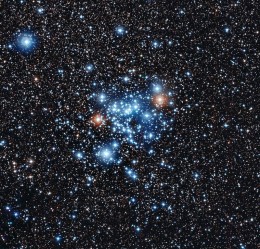
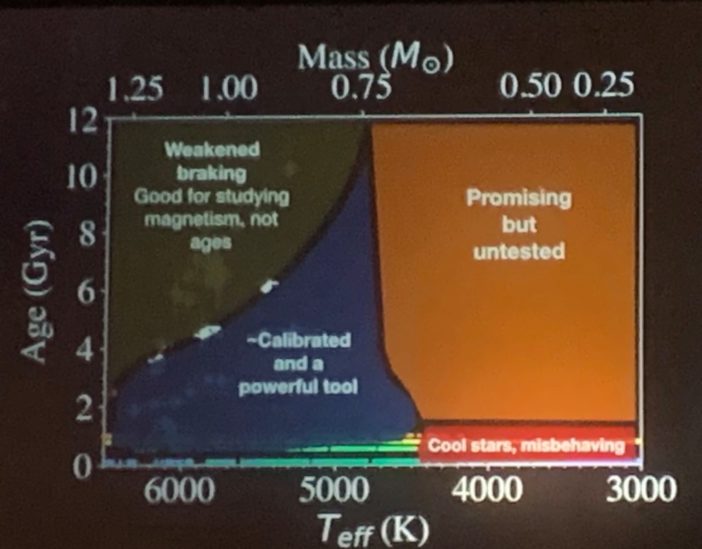
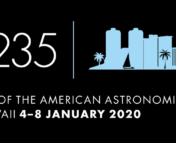

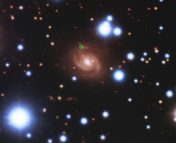

Thanks for writing and posting these notes!